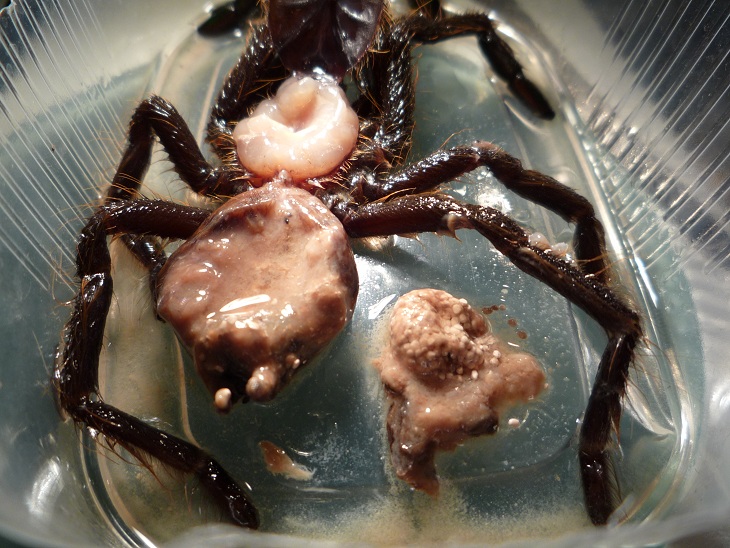

©: arachnomedicine.de
A spider has passed away, and now?
Tarantula pathology is currently at a very early stage. Nevertheless, in many cases the cause and manner of death can be determined and diseases or injuries can be evaluated. In case of a suspected infectious disease, the pathologist is able to draw conclusions about the health threat of the stock. Each post mortem makes an important contribution to the scientific knowledge about spider physiology and pathology, which improves the quality of tarantula healthcare in general.
First of all: If the spider is recently dead (2-3 hours post mortem, if you put it directly into the fridge 4-6 hours), it is still possible to draw a samples for the microbiological examination (bacteriology/mycology). As the quality of the carcass decreases dramatically due to auto/-heterolysis at the environmental conditions inside the enclosure, it is necessary to fixate the carcass. If you are not able to consult a tarantula vet or pathologist, it is highly recommended to fixate the carcass with formalin 3.5%(golden standard) or isopropanol 75% immediately(the volume of the carcass must be lower than 10-20% of the total fixation volume).
If you are able to reach a tarantula vet or pathologist, his or her orders regarding preferred fixation methods have priority.
To prevent possible damages during shipment(e.g. in a bottling jar), try to remove as much air from the container as possible.
Please do not send any samples without pior contact!
Send an examination request to arachnomedicine.de (if possible with a completed Medical history).
For the examination of other samples(e.h. hemolymph or other bodyly fluids, samples of white oral discharge, mites to determine the pathogenicity) please feel free to send an email to arachnomedicine.de.


©: arachomedicine.de
If an infectious disease is suspected, hygiene procedures are highly recommenden (if possible after consultation of the tarantula vet or pathologist). Here you can find some useful informations.